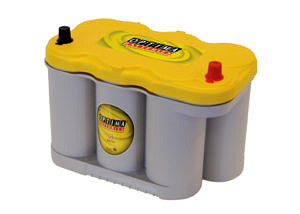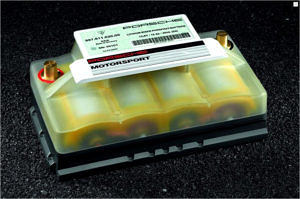Last week I posted an article on battery death in newer cars, and what to do to prevent it. Because of the feedback I got on that subject, I wanted to address more solutions to this problem. I found a reason why automobile manufacturers are still using lead-acid batteries, what other battery technology is being used, and what it will take to bring car battery technology into the 21st century.

For consumers, you can follow the tips in the previous article, or buy a “deep cycle” car battery. Optima is a popular brand, and their “Yellow Top” battery is of the deep cycle variety, which could help you. I recommend talking to your dealer or mechanic, who should also be able to recommend a good battery for your car. Some online research may help as well, if you’re so inclined. HowStuffWorks.com has a great article on batteries, if you’d like to have a better understanding, and they clearly explain it.
Now back to the manufacturers. If you look at the batteries in today’s cars, you’ll notice that once you pull the cover off of them, they look a lot like they did 40 years ago. In other words, battery technology for cars just hasn’t improved all that much since we switched from 6-volts to 12-volts in our cars. Meanwhile, cell phone batteries have gone from being huge bricks in the 1980’s to slim wafers today, all the while providing energy for more and more powerful phones, as well as giving longer talk life.
So why don’t automakers research and develop adapt these improvements to their cars? Some are starting to. The first hybrid vehicles had Nickel Metal-Hydride or NiMH batteries powering them, but the problem was their power to weight ratio. They just don’t store enough juice for how much they weigh. Newer hybrids are coming equipped with Lithium Ion batteries, which are much lighter and far more powerful than NiMHs, although most, if not all hybrids also have a separate starter battery, only for starting the car’s engine and getting it to start charging up the hybrid battery packs.

Porsche offers Lithium Ion batteries for the higher trim levels of its iconic 911 sports car as well as the Boxter convertible. Weight savings is their goal here. There is a drawback to Lithium Ion batteries though; when the temperature dips below freezing, they lose their power quickly, which could leave a driver stranded. This is where NiMH batteries shine; when it gets cold out, they can still start your car. Porsche knows this, and for those buyers that get the Lithium Ion battery, a standard lead-acid battery is also provided for cold-weather use.
Some automakers have resorted to using two traditional batteries in their cars, and tying them together to give the car’s electronics a longer running time, similar to the way your extended phone or laptop battery gives you an extra few hours of use. BMW puts two batteries in the trunk of some 7-Series sedans, which are required by the extra electronics that car comes with. If you know of any other vehicles that come with dual battery setups, drop me a line.
So what have we learned? That automakers don’t have a viable replacement for the current lead-acid batteries they’ve been using for decades, although in some cases they use two batteries to power the car’s electronics. Also, until researchers find a solution for the cold temperature problems with newer batteries, we’ll have to continue with what we’ve got.
by John Suit
Thanks to Anna and others for their feedback!
Battery Image Sources: Send a Friend Auto Care, Optima Batteries, Porsche

